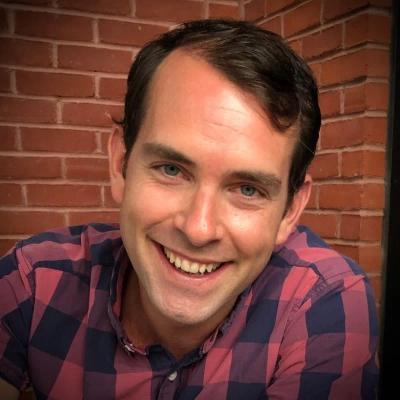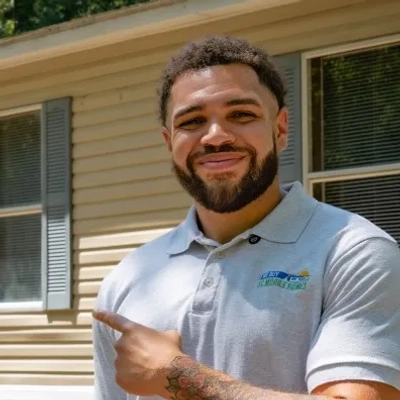25 Frameworks for Deciding Between Profit Reinvestment and Distributions in Small Business
Deciding how to allocate profits between reinvestment and personal distributions remains one of the most challenging decisions small business owners face. This article presents 25 practical frameworks drawn from insights shared by experts in the field, offering clear guidance on balancing growth, stability, and personal financial needs. These approaches provide actionable strategies to help business owners make confident capital allocation decisions that align with their specific circumstances.
Mission, Momentum, Margin Framework Guides Capital Decisions
It always comes down to vision and timing. The question I ask first is, where will this capital have the greatest impact, fueling future growth or rewarding the risk that's already been taken? When you're building something long-term, reinvestment often wins. But that only works if your cash flow can handle it and your team's aligned on the growth strategy behind it.
The framework I rely on is pretty simple: mission, momentum, margin. If the reinvestment directly supports our mission, aligns with where we already have momentum, and still leaves us with a healthy margin, then it's usually the right move. But when those three aren't lining up, it's a signal to pull back and consider taking a distribution or building reserves. It keeps the decision tied to values, not just numbers.

Apply the 50/30/20 Rule for Profit Allocation
We use a simple 50/30/20 rule: 50% reinvested in growth, 30% for operational buffer, 20% for owner distributions. This came from a painful lesson two years ago when we distributed too much profit, then couldn't afford a critical software license upgrade that would have prevented three months of manual workarounds. The operational buffer saved us when a major client unexpectedly paused services—we had runway to find replacement revenue without panic. Review this split quarterly because your business needs change; early stage requires more reinvestment, while established operations can afford higher distributions.
Balance Growth Through a Seasonal Framework Approach
I evaluate profit allocation through a seasonal framework that balances business needs with personal financial security. At the beginning and end of each fiscal year, I prioritize reinvesting in critical equipment upgrades and business enhancements to maintain competitive advantage. During mid-year periods, I shift focus toward building savings buffers and taking reasonable personal distributions, which provides financial stability. This balanced approach ensures the business has resources for growth while also recognizing the importance of compensating ownership appropriately.

Anticipate Future Success to Determine Reinvestment Strategy
When evaluating whether to reinvest profits or take distributions in a small business, I consider the potential opportunities to scale the business, increase profits, and expand the client base. Reinvesting profits can fund growth initiatives, new products or services, and marketing efforts that drive long-term success. Conversely, taking distributions might be appropriate if the business has a stable cash flow and the owner needs immediate income.
A key framework that helps me make this decision consistently is to anticipate the success and growth of our company. By projecting future performance and assessing whether reinvestment can lead to substantial growth, I can determine if reinvestment aligns with my strategic goals. If the outlook is positive and growth opportunities are significant, reinvesting profits makes sense. If not, taking distributions might be more appropriate. This forward-looking approach ensures that decisions support sustainable growth and financial stability.
Use ROI, Runway, Reason to Guide Decisions
When I'm helping business owners decide whether to reinvest profits or take a distribution, we always start by looking at their goals and stage of growth. Early-stage businesses usually need that cash to fuel expansion—marketing, hiring, systems, all the things that drive future revenue. But once a company is stable and generating predictable cash flow, it's time to ask if that money could work harder somewhere else—like paying down debt, building personal wealth, or diversifying investments outside the business.
The framework I use with clients is straightforward. First, ROI—what's the return if you reinvest those dollars? If the business can generate a higher return than you'd earn elsewhere, keep it working inside the company. Second, Runway—do you have enough liquidity to weather a slow quarter or big expense? You never want to reinvest yourself into a cash crunch. Third, Reason—what's motivating the move? I've seen owners pour money back in just to stay busy, not strategic. The goal is to find balance—grow the business, reward yourself, and make sure your money is working in alignment with your long-term vision, not just this quarter's excitement.

Identify the Specific Problem Before Reinvesting Profits
This question goes to the very heart of why you started the business in the first place. For many founders, it's a constant tug-of-war between fueling the engine for tomorrow and rewarding yourself for the hard work of yesterday. The decision isn't just financial; it's emotional. It defines whether you're building a cash-generating asset for your life now or sacrificing today for a much bigger vision later. Neither path is inherently right, but being unclear about your own goal is a surefire way to make the wrong choice.
My framework is less of a spreadsheet and more of a single, clarifying question: **"What specific problem am I buying a solution for?"** Reinvesting shouldn't be a vague gesture toward "growth." It should be a direct purchase. Are you buying more time by hiring an assistant to handle tasks that drain your energy? Are you buying a new customer channel by funding a specific, measurable ad campaign? Are you buying efficiency with a piece of equipment that reduces manual labor? If you can't articulate the exact problem the money will solve, the default should be to take the distribution. Pouring cash into a business without a precise target often just masks deeper operational issues.
I once mentored a founder of a small catering company who landed a huge contract, leaving her with a significant profit. Her first instinct was to "reinvest" by leasing a much larger kitchen. When I asked her what problem that solved, she paused. Her current kitchen was handling the load, albeit tightly. Her *real* problem wasn't space; it was the eight hours a week she spent on manual invoicing and scheduling. Instead of signing a massive lease, she invested a fraction of the profits in modern software and a part-time administrator. She bought back her time, which she then used to build client relationships and find another huge contract. The best investments don't just make the business bigger; they make it better, and often, simpler.
Split Decisions Across Growth, Stability, Personal Sustainability
I've learned that deciding between reinvesting profits and taking distributions isn't about the numbers alone — it's about momentum. My framework is what I call the "Three Horizon Rule." It splits decisions across growth, stability, and personal sustainability.
First, I look at growth horizon — if there's a clear, high-ROI initiative (new feature, marketing channel, or expansion) that compounds long-term value, I'll always reinvest. Every dollar should feel like a seed, not a withdrawal.
Second, stability horizon — I maintain at least six months of operational reserves before taking anything out. It's a buffer that allows agility without stress.
Finally, personal sustainability — as founders, burnout is a hidden liability. If taking a modest distribution helps maintain focus, that's a smart business decision too.
This framework keeps emotion out of finance. It reminds me that profit is only meaningful when it strengthens both the company and the people building it.

Maintain Reserves and Comply With Bank Requirements
Our approach has been to reinvest profits, except for amounts required for living expenses. Business owners should be cautious and practical when allocating capital. Maintaining substantial reserves during periods of prosperity is a sound strategy to ensure resilience through economic downturns and recessions.
Another reason for limiting profit disbursement to owners is to comply with bank requirements. In most loan agreements, there is a clause requiring a "Debt Service Coverage Ratio" (DSCR). DSCR = Net Operating Income / Total Debt Service. The typical DSCR for a small business is 1.2 to 1.00. Meaning for every dollar you pay out on loans, you will need to make and keep $1.20 in the company. This is a significant restriction on disbursements, particularly when quarterly taxes are due, resulting in a smaller amount for living expenses. Even if you do not currently have a business loan, you may need one in the future. The bank will apply the DSCR calculation and ensure that you can meet this ratio before approving the loan.
Overall, smaller disbursements and greater cash reserves in your company are fundamental to operating a successful business. Plowing profits back into the business and maintaining a strong balance sheet are the foundations of any great business.

Compare Business Growth Against Personal Financial Security
In a small business, the choice between reinvesting profits and taking distributions involves balancing growth potential, risk tolerance, and personal financial goals. We follow a straightforward framework that I call the "Growth vs. Liquidity Matrix."
Here's how it works:
1. Assess growth opportunities
- List initiatives that could boost revenue, improve margins, or strengthen competitive advantage (for example, hiring key talent, launching marketing campaigns, or upgrading technology).
- Estimate ROI and timeline for each initiative.
2. Evaluate liquidity needs
- Review personal financial requirements and safety net.
- Consider tax implications and emergency reserves.
3. Score and prioritize
- Assign a score to each reinvestment opportunity based on ROI potential and fit with strategic goals.
- Compare these scores to the benefits of taking distributions (personal financial gain, lifestyle flexibility, or reinvestment opportunities elsewhere).
4. Decision rule
- If reinvestment scores are higher than personal liquidity needs, reinvest profits to support growth.
- If personal liquidity or risk management is more important, take distributions.
- Reassess quarterly or whenever major strategic shifts happen to make sure decisions remain relevant.
Why it works:
- This approach forces a clear comparison between business growth potential and personal financial security.
- It minimizes impulsive, emotionally-driven choices.
- It promotes a disciplined cycle of evaluation, ensuring that the decision to reinvest or distribute is linked to measurable outcomes.
For small businesses in fast-growing markets, like digital apps or consumer tools, this framework helps keep the momentum going without losing financial stability.

Treat Profit Like Trust Earned and Protected
Profit decisions define culture as much as strategy within entrepreneurial companies. My coach once taught me to treat profit like trust: earned and protected. We reinvest when teams need tools to sustain excellence or growth. Distributions reward endurance once long-term foundations stand on stability. Both serve purpose when intent remains rooted in discipline and gratitude.
At our company profit allocation reflects our values rather than market fashion or pride. Every leader participates in review sessions to maintain transparency and ownership. We choose reinvestment when impact extends beyond quarterly metrics into culture. Reward follows responsibility because sustainability outlasts immediacy across business journeys. Discipline keeps growth aligned with purpose and future aspiration.
Assess Conversion Rates and Pipeline Like Scouting Talent
I've developed what I call the 'team scorecard' approach from my football and scouting days--I evaluate our business like assessing player talent. Each quarter, I look at three key metrics: our current deal conversion rate, upcoming property inventory, and personal cash flow needs. If we're converting deals at 80% or higher and have quality homes in our pipeline, I reinvest aggressively because momentum in real estate is everything. But if our conversion drops or inventory gets thin, I shift toward distributions to keep Spencer and me financially stable while we scout for better opportunities, just like waiting for the right draft pick.
Divide Profits Into Operations, Opportunity, Owner Buckets
I look at reinvesting versus taking distributions through the lens of return on impact rather than return on investment. I ask myself, "Will this dollar create lasting value for the business or just short-term comfort?" Early on, I made the mistake of withdrawing money too soon, which slowed our momentum. Now, I only take distributions once I know the reinvested funds have already paid off in efficiency, customer retention, or team growth.
The framework that keeps me consistent is a "three-bucket" approach: operations, opportunity, and owner. Every profit dollar gets split into those buckets. Operations covers stability, opportunity funds, and future growth, and the owner portion is what I can take guilt-free. It keeps me grounded, ensures the company stays healthy, and still lets me enjoy the rewards of building something long-term.

Set Aside Three Months Before Reinvesting Wisely
For us, it comes down to one guiding question: Will this dollar make more money if it stays in the business or if it's taken out? In the early years of Magic Pest Control, almost every dollar went back into growth—vehicles, training, and local marketing. But now, we use a simple framework: we look at our quarterly cash flow, set aside enough to cover three months of expenses, and then decide whether to reinvest to create measurable returns in the next 6-12 months. If not, we take a distribution.
This approach keeps decisions grounded instead of being emotional. I've learned that reinvestment only makes sense when there's a clear path to impact—like hiring a new tech to increase service capacity. Otherwise, it's better to reward the people who built the business and maintain healthy margins. That balance has helped us grow sustainably without burning out or overextending.

Follow the 70-30 Rule for Growth Distribution
I use a simple 70-30 rule based on my engineering background - 70% gets reinvested back into deals and business growth, while 30% goes to distributions for living expenses and building our family's security. When I'm analyzing a reinvestment opportunity, I ask myself: will this dollar generate more than a 20% return within 12 months? If it's a house flip or wholesale deal that meets my criteria, the money goes back in. If not, like during slower market periods, I take distributions to diversify into other assets or simply enjoy the fruits of our labor with my wife Kacie and our girls.

Apply Growth Versus Gratitude Test to Decisions
I use what I call the 'growth versus gratitude' test when deciding between reinvestment and distributions. After 17 years in real estate, I've learned that if I can identify a specific property or deal in Augusta that will generate at least 25% returns--like a distressed home in Evans or Martinez that fits our buy-and-hold criteria--then reinvestment wins every time. But if the market feels overheated or I'm just reinvesting out of habit, I take distributions to enjoy life with Shannon and our four kids, maybe plan a family trip or invest in our church community. The key is being honest about whether you're reinvesting from opportunity or just from fear of missing out.

Set Target Thresholds for Reserves and Needs
I look at my real estate business as an ecosystem that needs to balance growth with stability. When evaluating whether to reinvest or take distributions, I focus on three questions: Where are we in the local Vegas market cycle? How strong is our current deal pipeline? And what's our personal financial situation? In strong markets with solid deals in our pipeline, I'll reinvest 70-80% of profits to capitalize on momentum. But I've learned that having personal liquidity is equally crucial--it creates peace of mind and positions us to act quickly when unexpected opportunities arise. The framework that's worked best for me is setting target thresholds for both business reserves and personal needs before making any decision.

Assess Opportunity Momentum in Your Local Market
I evaluate reinvestment versus distribution decisions by assessing what I call the 'opportunity momentum' in my market. When we're seeing quality off-market properties or distressed homes that match our renovation expertise in Kitsap County, I'll reinvest heavily because that's where our competitive advantage lies. But I've learned from both my construction and ministry background that sustainable businesses require balance--so I always maintain a three-month operating reserve before considering any distributions. This approach ensures we can capitalize on great deals while maintaining personal financial stability that lets me serve my family and community with integrity.

Ask What Serves Your Clients Better Now
I approach this decision by asking myself one fundamental question: 'What serves our sellers better right now?' If I see an opportunity to expand our marketing reach or improve our systems to help more homeowners in tough situations, I reinvest those profits immediately. But I've learned from my teaching days that you can't pour from an empty cup--if my personal finances are stretched thin, I take distributions to ensure I can show up fully for the families who need our help. The framework that's kept me consistent is maintaining a 90-day operating reserve first, then splitting remaining profits 60-40 between reinvestment and distributions, adjusting based on whether I see clear ways to better serve our community.

Secure Foundation First Before Aggressive Reinvestment Begins
I follow what I call the 'foundation first' approach - I make sure we have six months of operating expenses in reserves before aggressive reinvestment. After that safety net is secure, I evaluate each opportunity against our current inventory and market conditions in Springfield. If we have solid deals lined up and the local market is moving well, I'll reinvest up to 80% of profits because real estate moves fast here and timing is everything. But I've learned from watching my parents build their rental portfolio that consistent, measured growth beats boom-and-bust cycles every time.

Ensure Funds Cover Next Two Core Purchases
My framework for reinvesting versus taking distributions is simple: I always ensure we have enough funds to purchase our next two mobile homes for renovation, as that's the core of our business model in South Carolina. Once that liquidity is secured, I then assess the market for larger, more impactful acquisition opportunities that can house multiple families. If I find one, I reinvest. Otherwise, I take distributions, because personal financial stability lets me be more aggressive when the right opportunity to expand affordable housing comes along.

Consider Utility Value of Money Over Time
Hi, I'm a partner at an accountancy practice in the UK and also the founder of Accounts Draft, which is a purpose-built AI for accountants.
This question is actually really not straightforward. Despite a lot of people thinking you should always reinvest profits to try and grow a company.
Often what people overlook is the utility value of the money. Having the money now when you are younger and poorer, and therefore can make better use of it than when you're older, is something that people massively overlook.
They'll often only think that investing the money so that it can compound is the best idea, and whilst this can often be the case, people place too much emphasis on it.
Another example which you might find very interesting is with e-commerce companies. I had an e-commerce company (I built it to around £50,000 in annual sales in my spare time), and I definitely made this mistake myself.
The problem e-commerce companies, is that you are always reinvesting your profits into stock. What happens is you keep trying to grow the company and you never take any money out because all your money gets reinvested in stock, creating a never-ending cycle until you either sell the business or stop trying to grow it.
Not only did I make this mistake, but I've seen it across multiple e-commerce companies that I act for as an accountant.
Hope this was useful. Let me know if you have any questions.
Thanks,
Rob
Robert Benson-May
Evaluate Sustainability, Scalability, Security Before Deciding
In deciding whether or not to reinvest profits in your small business or take a distribution starts with knowing your numbers well. Start by looking at:
1. Business Sustainability: Are the core operations sustainable? Meaning, is there sufficient cash to cover your company's bills. Think operational costs, payroll and taxes. After all of those are covered, is there a sufficient reserve remaining to cover unexpected expenses. I would suggest a 10-25% reserve depending on the founder's risk aversion.
2. Business Scalability: After the core business plus reserves are covered, an important question to ask, is whether reinvesting in the company will increase future returns for the business or increase efficiency?
3. Business Security: Once you have answered the question around business scalability, ask yourself, if you take a distribution, will this add unnecessary risk to the business?
When following this 3-part framework, you can objectively assess whether reinvesting in the business will generate long-term growth or whether a personal distribution will support your personal financial freedom without weakening the position of the company.

Ask if Decision Feels Comfortable After Earnings Stop
Every founder faces this moment. The numbers look healthy, the bank balance feels safe, and the question appears. Do we take it home or build more?
I have been in rooms where this debate goes on for hours. Logic says reinvest. Emotion says reward the risk. In truth, both are right.
My approach is to ask one question. If the business stopped earning for six months, would this decision still feel comfortable? If yes, I lean toward growth. If no, I choose stability.
Over time, I learned that reinvestment builds companies, but distributions build trust. Strong companies need both.

Cover Personal Needs First Then Reinvest Strategically
I'm Jenna Lofton, a Certified Financial Planner and founder of StockHitter.com. Beyond my financial consulting work, I also run an ecommerce business selling archery equipment, so I deal with this decision every quarter.
The framework I use is pretty simple: cover your personal needs first, then reinvest what's left if it'll actually grow the business.
Here's how I break it down:
Step 1: What do I need to live on?
I pay myself a consistent salary from the business every month. That covers my personal expenses, taxes, retirement contributions, and a little cushion. This isn't optional. If the business can't support a reasonable salary for me, then it's not a real business yet.
Step 2: Does the business have enough cash reserves?
Before I reinvest anything, I make sure the business has 3-6 months of operating expenses saved. Supplier payment gets delayed? Unexpected tariff increase? Ad costs spike? I need cash on hand to handle it without panicking or taking on debt.
Step 3: Will reinvesting actually generate a return?
This is where most people mess up. They reinvest just because they think that's what you're "supposed to do." But if you're dumping money into inventory that sits for six months or running ads that don't convert, you're not reinvesting. You're just spending.
I only reinvest if I can clearly see how it'll increase revenue or profit. Buying more inventory of a product that's selling fast? Yes. Hiring a part-time VA to handle customer service so I can focus on growth? Yes. Spending $5K on a website redesign because it looks cooler? No.
Step 4: What's my personal financial situation?
If I've got high-interest debt or I'm behind on retirement savings, I take distributions and handle that first. Building wealth outside the business matters. Putting every dollar back into the business feels ambitious, but if the business tanks, you're left with nothing. Diversify.
The decision comes down to this:
If the business is stable, I'm paying myself fairly, and there's a clear growth opportunity that'll generate a return, I reinvest. If not, I take distributions and invest that money somewhere else, whether it's paying down debt, maxing out my retirement accounts, or building my real estate portfolio.
Don't reinvest out of guilt or because some entrepreneur on Instagram says you should. Reinvest when it makes financial sense and you can afford to take the risk.
Happy to clarify anything or dive deeper into any of these points if that's helpful.

Test Cash Yield Versus Growth Unlock Potential
I use a simple cash yield vs growth unlock test. Inside Advanced Professional Accounting Services we look at the next dollar of reinvestment and ask if it produces more durable recurring capacity or accuracy in our finance stack than the same dollar taken out today. If the ROI is compounding inside the machine we keep it inside. If it's low lift or vanity we distribute. This keeps the decision unemotional. The lesson is wealth grows fastest when capital is treated like fuel not reward.








